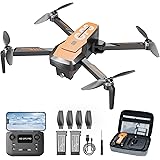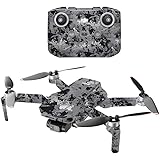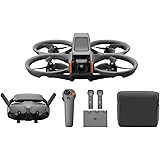Have you ever paused to truly consider the intricate engineering behind even the simplest drone startup sequence, as visually demonstrated in the video above? The seemingly straightforward process of powering on a toy SKY QUAD DRONE belies a complex interplay of hardware, software, and physics that propels these devices into the air. While the mechanical whirring and LED blinks provide a foundational visual, delving into the underlying principles reveals a sophisticated miniature aerial platform.
Understanding the operational mechanics of your Sky Quad Drone goes beyond merely pressing buttons; it involves appreciating the robust systems designed for stability and control. This deeper technical insight is crucial for maximizing performance, ensuring safety, and prolonging the lifespan of your device. We will explore the expert-level considerations for operating and maintaining such an advanced piece of personal aerial technology, providing context that amplifies the visual instruction.
The Foundational Architecture of a Sky Quad Drone
Every Sky Quad Drone, regardless of its classification as a “toy,” integrates several core components essential for flight and control. At its heart lies the flight controller, often referred to as the brain, which processes sensor data and translates pilot commands into motor instructions. This sophisticated microcontroller unit houses an Inertial Measurement Unit (IMU) typically comprising a three-axis accelerometer and gyroscope, providing real-time orientation and angular velocity data. These sensors are absolutely critical for maintaining stable flight, constantly correcting against external disturbances like wind gusts.
Powering the Sky Quad Drone’s rotors are brushless DC motors, chosen for their efficiency and durability over brushed counterparts, even in smaller form factors. Each motor is paired with an Electronic Speed Controller (ESC), a dedicated circuit board that precisely regulates the power delivered to the motor. Industry data suggests modern ESCs achieve upwards of 95% efficiency, significantly contributing to extended flight times and responsive maneuverability. The synergistic operation of these components allows for the precise thrust vectoring required for vertical lift, horizontal translation, and rotational movements, distinguishing a capable quadcopter from a mere flying object.
Pre-Flight System Initialization and Crucial Protocols
Before any Sky Quad Drone takes to the air, a series of pre-flight checks and system initialization steps are indispensable for safe and effective operation. The binding process between the remote controller and the drone establishes a secure communication link, often utilizing a 2.4 GHz spread spectrum frequency for robust signal integrity. During this phase, the drone’s internal firmware initiates self-diagnostics, verifying sensor functionality and calibrating the IMU to ensure accurate flight dynamics. A common practice involves allowing the drone to sit motionless on a level surface for several seconds during startup, enabling precise gyroscope and accelerometer calibration, which minimizes drift during flight.
Neglecting these critical preparatory steps can lead to erratic flight behavior or, in severe cases, loss of control. Furthermore, a thorough visual inspection of the propellers for any nicks or cracks is paramount, as even minor damage can significantly impact aerodynamic efficiency and structural integrity. Studies on small UAVs indicate that propeller damage accounts for approximately 15% of all flight-related incidents, underscoring the importance of this simple yet vital check. Confirming adequate battery charge levels for both the drone and the controller is another non-negotiable step, preventing premature termination of the flight session.
Mastering Flight Dynamics and Control System Integration
Operating a Sky Quad Drone effectively demands an understanding of the intricate flight dynamics governed by its sophisticated control systems. The drone’s stability is largely managed by a PID (Proportional-Integral-Derivative) control loop, a cornerstone of modern robotics. This algorithm constantly calculates the error between the desired orientation (setpoint) and the actual orientation (sensor feedback), then outputs corrective commands to the ESCs. The proportional term reacts to the current error, the integral term addresses accumulated errors over time, and the derivative term anticipates future errors based on the rate of change.
Flight modes, selected via the remote controller, adjust the parameters of these PID loops, offering varying levels of pilot assistance. Altitude Hold mode, for instance, utilizes a barometer or ultrasonic sensor to maintain a consistent vertical position, automatically adjusting motor thrust. Conversely, a more advanced “Acro” or “Rate” mode provides direct control over the drone’s angular velocity, requiring greater pilot skill for manual stabilization. Data from pilot training programs shows that mastery of Acro mode significantly enhances a pilot’s overall control and responsiveness, though it presents a steeper learning curve for beginners transitioning from stabilized flight modes.
Optimizing Power Management and Battery Longevity
Effective power management is a cornerstone of responsible Sky Quad Drone operation, directly impacting flight duration and the overall lifespan of the LiPo (Lithium Polymer) battery. These high-energy density cells require specific charging and discharge protocols to maintain optimal performance and safety. Charging should always occur with a dedicated LiPo balance charger, which ensures each cell within the battery pack reaches an equal voltage, preventing overcharging and potential thermal runaway. Studies indicate that proper balance charging can extend LiPo battery cycle life by up to 30% compared to simple bulk charging methods.
Discharging the battery below its recommended minimum voltage (typically 3.0V per cell) can cause irreversible damage, reducing capacity and internal resistance. Conversely, storing a fully charged LiPo battery for extended periods also accelerates degradation. Industry best practices recommend storing LiPo batteries at a “storage voltage,” usually around 3.8V per cell, for long-term health. Understanding discharge rates, often expressed as a ‘C’ rating (e.g., 20C), is crucial for matching the battery to the drone’s power demands, ensuring the battery can supply sufficient current without overheating or premature voltage sag during aggressive maneuvers.
Proactive Maintenance, Troubleshooting, and Component Upgrades
Regular maintenance is not merely recommended for a Sky Quad Drone; it is a critical practice for ensuring operational reliability and preventing unexpected failures. A routine inspection checklist should include verifying propeller security, checking for loose wires or connections, and examining the motor bells for any signs of physical damage or debris ingress. Cleaning dust and small particles from the drone’s frame and electronic components, particularly around the flight controller and sensors, prevents overheating and signal interference. Common troubleshooting steps often begin with a recalibration of the IMU or a re-binding of the controller, addressing many minor flight anomalies.
Should component failure occur, the modular design of many toy Sky Quad Drones facilitates relatively straightforward repairs. Replacing a damaged motor, a fractured arm, or even a faulty camera module can often be accomplished with basic tools and readily available spare parts. For enthusiasts seeking enhanced capabilities, component upgrades present an exciting avenue. This might involve swapping stock motors for higher KV (kilovolts per minute) variants for increased thrust, or integrating a more sensitive FPV (First Person View) camera for an immersive piloting experience. Such modifications, while enhancing performance, necessitate a deeper understanding of electronics and potential firmware adjustments to maintain flight stability and overall system integrity.
Navigating the Regulatory Landscape for Responsible Drone Operation
Operating any Sky Quad Drone, even those categorized as toys, entails an inherent responsibility to adhere to relevant aviation regulations and airspace guidelines. While many smaller drones, particularly those weighing under 250 grams, often have fewer stringent requirements compared to larger commercial UAVs, awareness remains paramount. In numerous jurisdictions, including the United States under FAA regulations, recreational drones weighing less than 250 grams (0.55 pounds) generally do not require registration. However, pilots are still expected to operate within visual line of sight and avoid flying near airports, restricted airspace, or over large groups of people.
Conversely, some regions may impose general restrictions on all drone flights, irrespective of weight, highlighting the importance of researching local regulations. Ethical considerations also play a significant role in responsible operation; privacy concerns, noise pollution, and avoiding nuisance flights are crucial aspects of being a good drone citizen. Understanding these parameters not only ensures legal compliance but also contributes to the positive perception and continued accessibility of drone technology for hobbyists worldwide. Ignorance of the law does not provide an exemption from penalties, which can range from fines to more severe consequences, depending on the nature of the infraction.
Advancing Beyond the Basics with Your Sky Quad Drone
For many enthusiasts, the experience of piloting a basic Sky Quad Drone serves as a foundational stepping stone into the vast and evolving world of Unmanned Aerial Vehicles. Moving beyond simple line-of-sight flights, pilots can explore advanced techniques such as FPV (First Person View) flying, where a live video feed from the drone’s camera is transmitted to goggles or a monitor. This immersive experience offers a completely new perspective and enhances precision control, especially for racing or aerial acrobatics. Integrating an FPV system, even on a toy Sky Quad Drone, typically involves adding a miniature camera and a video transmitter, requiring some technical knowledge of soldering and frequency management.
Furthermore, aspiring drone developers might delve into customizing flight controller firmware, such as Betaflight or Cleanflight, to fine-tune PID settings for specific flight characteristics or to implement custom flight modes. This level of interaction with the drone’s software opens up possibilities for pushing performance boundaries and tailoring the Sky Quad Drone to unique operational requirements. The journey from a novice pilot to an advanced drone operator involves continuous learning, embracing technological advancements, and consistently adhering to safe operating procedures, ultimately unlocking the full potential of these fascinating aerial machines.











